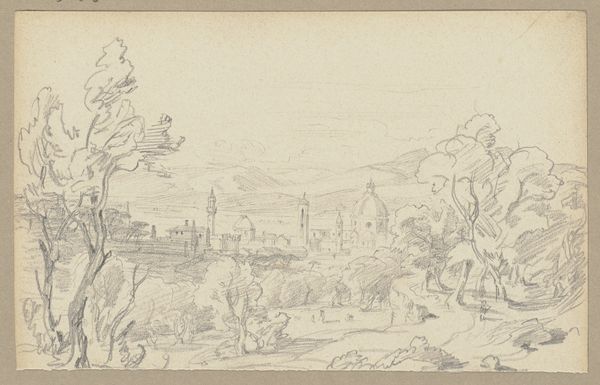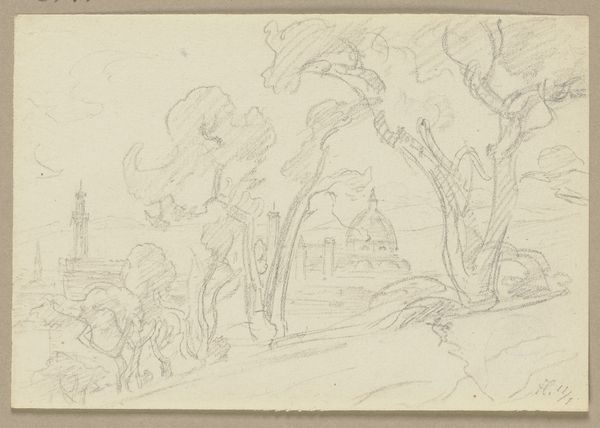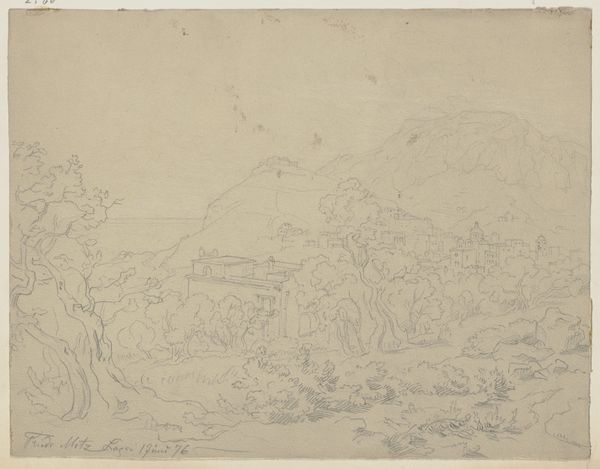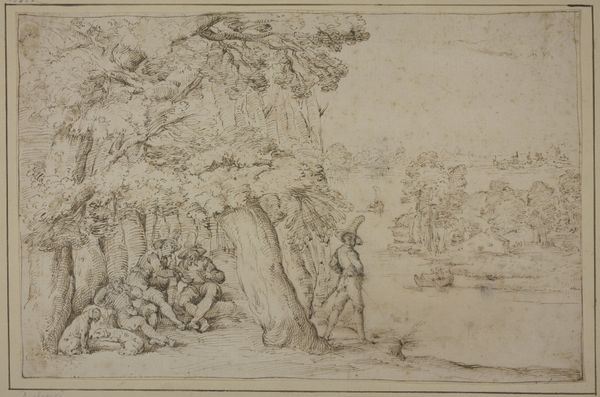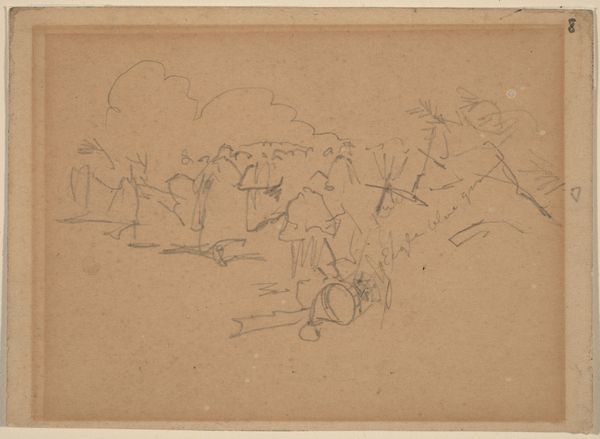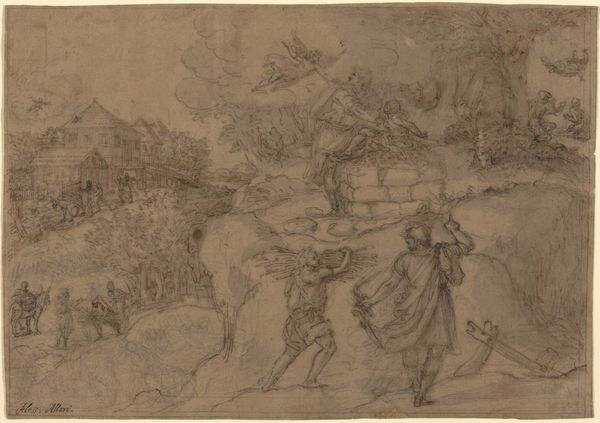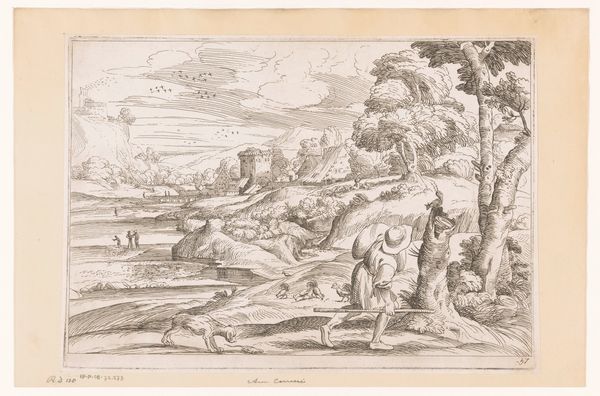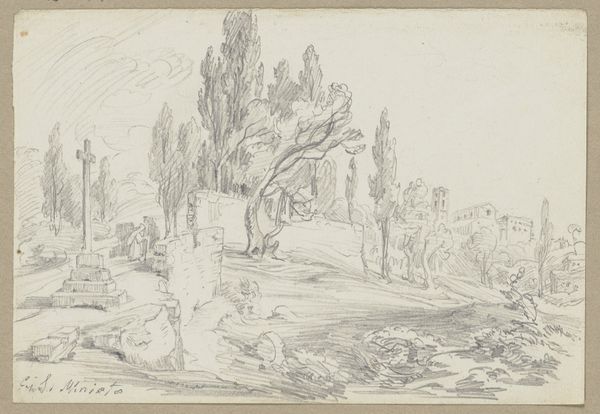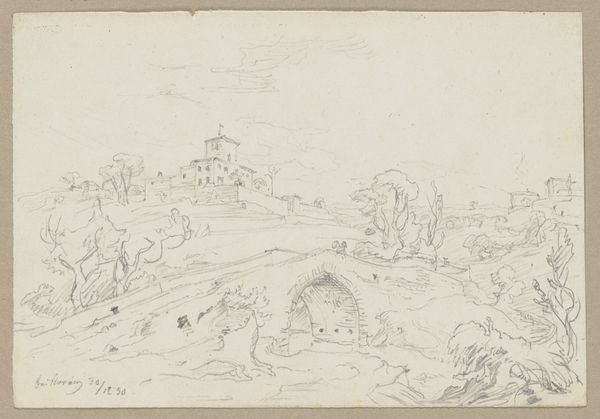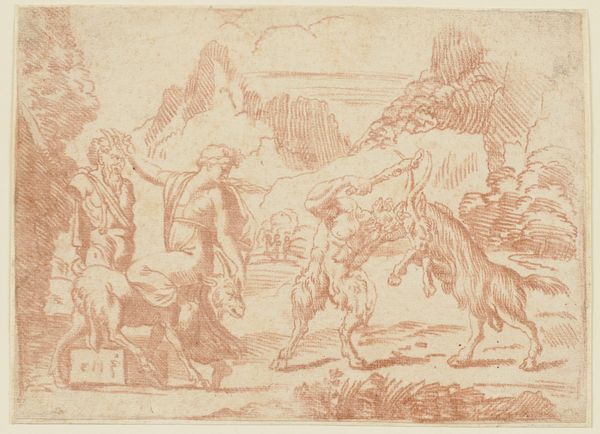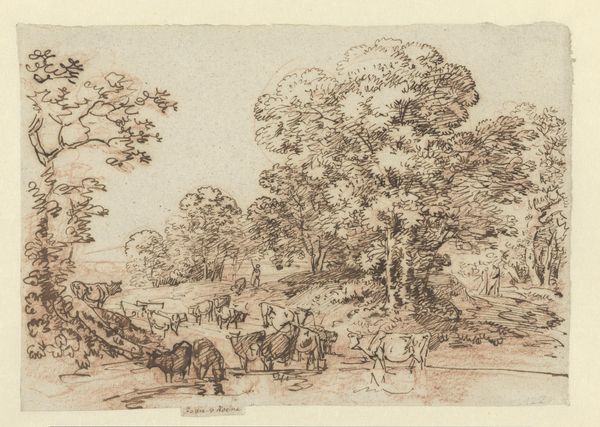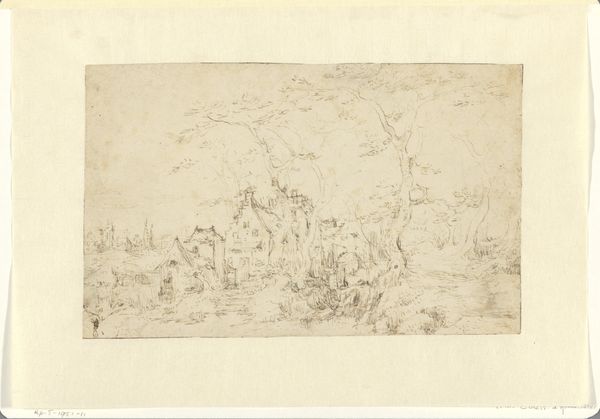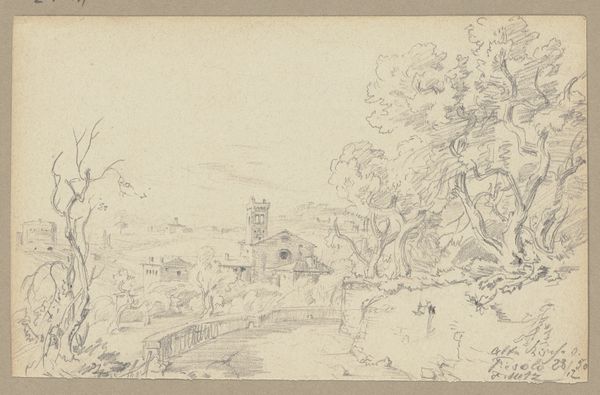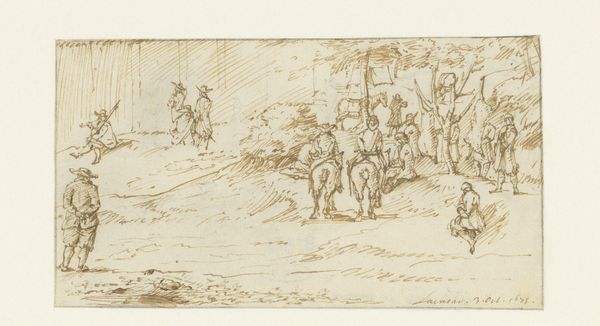
Copyright: Public Domain
Curator: I am immediately drawn in by the detail, the meticulous observation of forms, that the artist employed in the making of this artwork. Editor: This is a pencil drawing from 1851, entitled “Landschaft nahe San Miniato” – Landscape near San Miniato – by Friedrich Metz, part of the Städel Museum’s collection. Curator: A rather fitting title, as this piece radiates a quiet and sublime contemplation of the natural world. Look at the trees, for instance; each branch seems to whisper a story. And I sense that its cultural value, that derives from an artist's deep understanding and representation of a specific place, might become important with the pass of time. Editor: There is a definite romantic sensibility at play. Landscape as not just representation, but evocation of feeling, through particular symbols that have acquired meaning through time. Buildings atop the hills can suggest ancient, timeless presences. The figures almost hidden among the trees along the winding path appear in a secondary position, and the emphasis is on the scene that almost invites for a deep self-reflection. Curator: You see that's exactly what many romantic artists would strive for, they created pieces to be more inclusive of the wider public. Romantic artists and artworks became instruments for social critique. Landscape and symbolism have a fascinating relationship in romantic art, it allows the viewer to access a wider level of meaning. Editor: Yes, there’s a psychological element, too. Landscape and path can signify an allegory of human's destiny and path in life. It’s like Metz wants us to get lost, or find ourselves, among the symbolic representation of forms. Curator: And while on the surface this seems like a simple sketch, a travel drawing created _in situ_, I wonder if the intentional inclusion of cultural symbolism can tell us more about its audience, function, and relevance in society, in that historical moment, and today. Editor: Indeed. The longer I look at this piece, the more layers I discover. It truly speaks volumes about a search for meaning, both for the artist and the observer. Curator: For me it is a lesson on how an apparently small work on paper can suggest how to understand and reshape not only an era's view of nature, but the view that a society wants to share and be represented by.
Comments
No comments
Be the first to comment and join the conversation on the ultimate creative platform.
